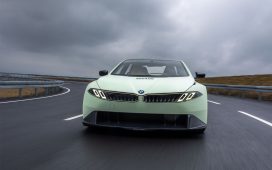As the Canadian federal government considers a tariff on Chinese electric vehicles — intended to offset some of China’s intentional market saturation — it is only logical to wonder what impact this move will have and what the future holds for the EV market.
We are part of a team of researchers analyzing the lifespan of a variety of commonly used products from basic plastics to EV batteries. Central to our work has been the question of how battery-powered vehicles are able to address our transport-related carbon emissions.
Entry barriers
Across Canada, the sale of electric vehicles is on the decline. The reasons why are complex, but also fairly simple.
Arguably, one of the biggest issues is that EVs have a low resale value. There are likely a number of factors behind this, however, the biggest concern is that battery lifespans are not proving to be as long as hoped.
The key issue which separates battery-powered EVs from tradition internal combustion engines is, of course, the batteries themselves. EV owners in Canada have in recent years begun to notice that their batteries aren’t lasting nearly as long as advertised. This trend is likely the result of these batteries being tested in environmental conditions quite different from those experienced by many Canadians during the winter months.
Many Canadians are struggling to sell their EVs and, as the price of purchasing an EV has come down, most consumers would rather buy new than take a chance on a used vehicle and its potentially worn out batteries. On top of this EV range is still not what many consumers are hoping for and conventional chemical batteries perform poorly in cold temperatures.

(AP Photo/Lekan Oyekanmi)
Life cycle questions
A life cycle assessment is an exhaustive and long-term process. Life cycle assessments take into consideration material production, energy input and output, generated waste, manufacturing emissions, byproducts and the end-of-life process.
The benefits of a life cycle assessment perspective is that we can observe the trajectory of these products from cradle-to-grave. This perspective allows us to question if electric cars are achieving what we need them to do.
As many buyers start to wonder if their EV battery will last as long as advertised, an additional concern further wrinkles this once clear cut ‘green’ decision. This is the reality that a battery which has served roughly half of its intended operational lifespan cannot be safely recycled on any practical industrial scale.
Read more:
Fears over future of the car industry as sales fall and spare parts become scarce
Driving an EV emits less waste than driving a similarly sized internal combustion engine car. However, after it’s off the road, and the battery sits eroding on a concrete slab, the situation is a bit less clear. This isn’t to say that EVs as alternatives to the internal combustion engine should be abandoned altogether, just that they come with additional environmental considerations that need to be understood.
Equally important to end-of-life concerns are issues in production and the ethical sourcing of materials. Where do we get the lithium and cobalt for these batteries? There is no ‘fair-trade’ system in the metals and minerals mining sector and these activities carry a number of environmental and social consequences.
These concerns become even more relevant when the environmental standards of electric vehicle producing countries like China are considered with its poor human rights observances and issues with environmental pollution.

(AP Photo/Rodrigo Abd)
Rethink needed?
Many Canadians see EVs as a greener alternative to traditional internal combustion engine cars. With EV sales in Canada seemingly facing a downturn, the federal government’s proposed tariff would likely help to balance China’s strategic monopolization of the EV market — incentivizing Canadians to opt for domestically manufactured EVs or the environmentally-friendly cost-effective public transit option.
Read more:
What Honda’s big electric vehicle announcement in Ontario really means
However, such policy moves miss a wider point. While EVs can play an important role in decarbonization, before that reality can come to pass there are serious questions and concerns which must first be addressed across the vehicles entire lifespan.
Without effective recycling systems, advancements in battery technology, and serious efforts to improve ethical standards in mineral mining, conscious consumers should think twice about whether that new EV is really the planet-saving choice they thought it was.
This article was written with the support of research assistant Guzal Mamadalieva and extended sessional instructor Regan Lipes.











